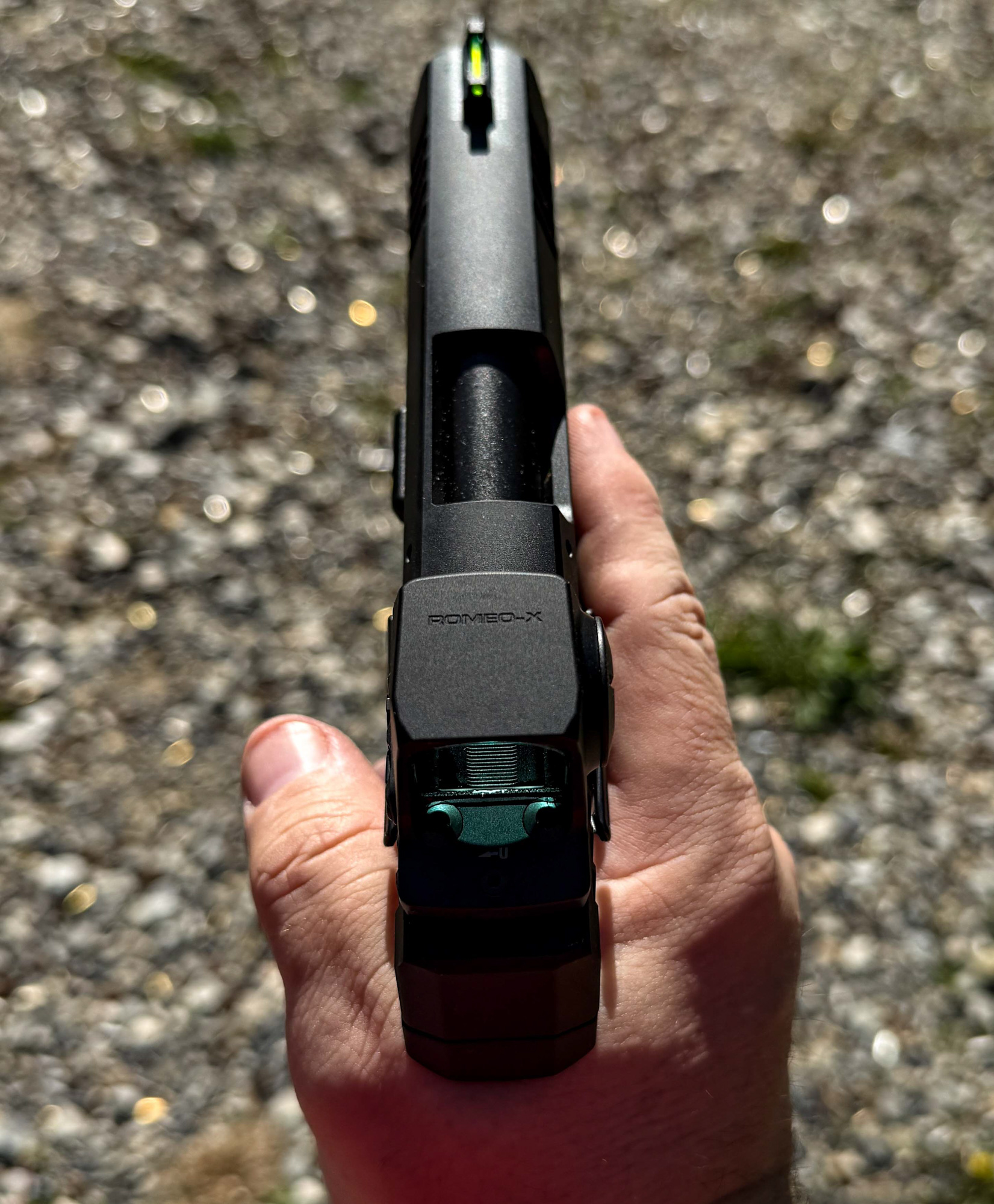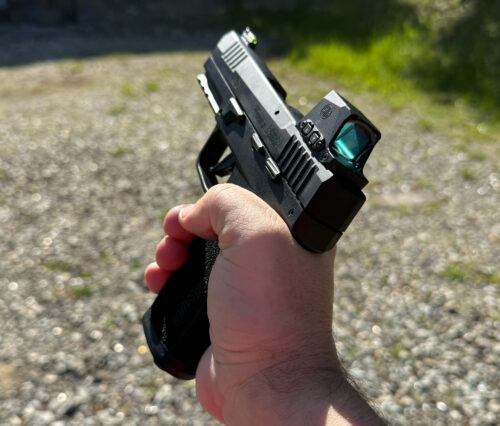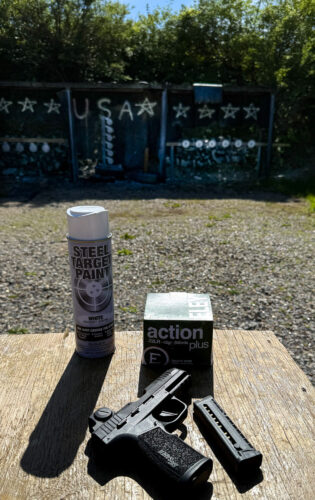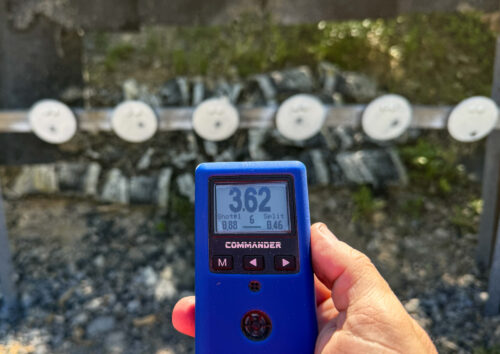As someone with over 20 years of experience using red dot optics for both personal defense and competition, I’ve had the opportunity to run just about every major optic on the market across a variety of platforms. From early Trijicon RMRs to the latest Holosun innovations, I’ve seen firsthand how the technology has matured. I’ve had considerable experience with SIG Sauer manufacture optics since they began manufacturing optics under its Electro-Optics division in 2015. I appreciate SIGs commitment to being able to design and manufacture entire weapon systems and not just aspects of weapon system. So when SIG released their Romeo X line I was pretty excited, as it appeared as though SIG finally had a legitimate competitor to the undisputed champion of the pistol mounted red dot optic category – the Trijicon RMR. So I ordered an example of the SIG Romeo X Compact for my SIG P322 pistol.
First, let’s talk about form factor. The Romeo X Compact is designed around the RMSc footprint, and it’s a sleek, low-profile optic clearly built with concealment in mind. On the P322—a .22 LR pistol designed as both a training tool and fun plinker—it looks like it was made to live there. The aluminum housing is both lightweight and rugged. It feels more premium than earlier SIG optics like the Romeo Zero, which I always found a bit plasticky for serious use. in the design in 2025 has been updated since the 2024 model and the light emitters which project the red dot on the front lens are now enclosed. This is a significant design change as one of the very few criticisms of the initial release of the Romeo-X optics Was that the designed did not enclose the emitters.
Installation was straightforward. The P322’s slide is optics-ready with the RMSc footprint, so mounting required nothing more than removing the cover plate and securing the Romeo-X Compact with the included screws. The optic seated solidly with no visible play, and zeroing was equally uneventful. Adjustments are tactile and accurate—one MOA per click, with no slop or wandering reticle. Within 15 rounds, I was combat accurate at 25 yards on 8” steel plates.
The 3 MOA dot is bright, crisp, and daylight-visible even under strong sun, with 15 brightness settings including two night vision-compatible modes. I didn’t expect to use NV with a .22 pistol, but for those training with night vision gear, it’s a thoughtful inclusion. Battery life is rated at 20,000+ hours, and the side-loading CR1632 battery tray is a VERY welcome improvement over older bottom-mount designs that required removal and re-zeroing. I haven’t run it for long enough to test longevity, but I’ve had no flicker or dropouts so far. The optic also has the option to create a dot within a circle, which is preferred by some, but not myself. Options are good.
One standout feature of the Romeo X Compact is its use of aspheric glass, which provides a noticeably cleaner sight picture with minimal distortion at the edges. If you’ve spent time behind older red dots with blue tint or fisheye effect (i’m looking at you, Trijicon RMR), this will feel like removing a veil. The window isn’t huge, but it’s generous enough for rapid target acquisition, especially when paired with good presentation technique. I typically several different practice drills on a plate rack with the P322, and reacquiring the dot felt nearly instantaneous. I can pretty comfortably and consistently achieve low to med three second times shooting six plates at 10 yards. Note that the updated design for 2025 has the rear lens much more accessible for cleaning which is appreciated.
Now, let’s address the elephant in the room: why run a $400 optic on a .22 pistol? For me, the P322 is a high-volume trainer—a way to keep reflexes sharp without chewing through my 9mm ammo stockpile. It doesn’t feel like overkill—it feels like continuity. Training on a .22 shouldn’t mean compromising on gear. And as an NRA Certified Pistol Instructor, I get a pretty healthy discount on SIG products, which helps.
Are there downsides? Sure. At this price point, some users might expect auto-adjusting brightness, which the Romeo X does not do. That’s forgivable in my book, because I prefer manual controls for consistency—but it’s worth noting. Also, the button placement is on the left side, and while they’re responsive and positive, a right-handed shooter might find them slightly less intuitive. Minor gripes, but fair to mention. If I was really looking for points of criticism, then I would lament the super tiny hex screws that are used for windage and elevation adjustment of the red dot. The appropriate tool is included in the packaging, but I would still prefer a flathead that could be adjusted a coin or pocket tool.
In short, the SIG Romeo X Compact punches well above its weight. Mounted on the P322, it transforms a capable training pistol into a precision instrument. The optic is crisp, rugged, reliable, and thoughtfully designed. While it may seem odd to put such a high-end optic on a rimfire pistol, serious shooters will appreciate the consistency and muscle memory it enables. And when you’re burning through 500 rounds on a Saturday afternoon, you’ll be thankful for the clarity and durability it brings to the table. Depending on where you purchase, you can find this optic for ~$400.00 which is a darn good value in today’s market For such a capable optic.
Would I trust the Romeo X Compact on a carry gun? Absolutely. I’ve literally put thousands of rounds through both pistols and rifles which have SIG Optics on them. I’ve twice shot at the World Speed Shooting Championship – I’ve never encountered a failure with a SIG Optic. Would I buy it again for a training pistol? Absolutely. In fact, I was so impressed I order the Romeo-X Pro for my SIG P320 Custom Works. But more on that in my next review.
Final verdict: 9.5/10. It’s the best consumer red dot SIG has made to date—and possibly one of the best compact RMSc-footprint optics currently available.





0 Comments